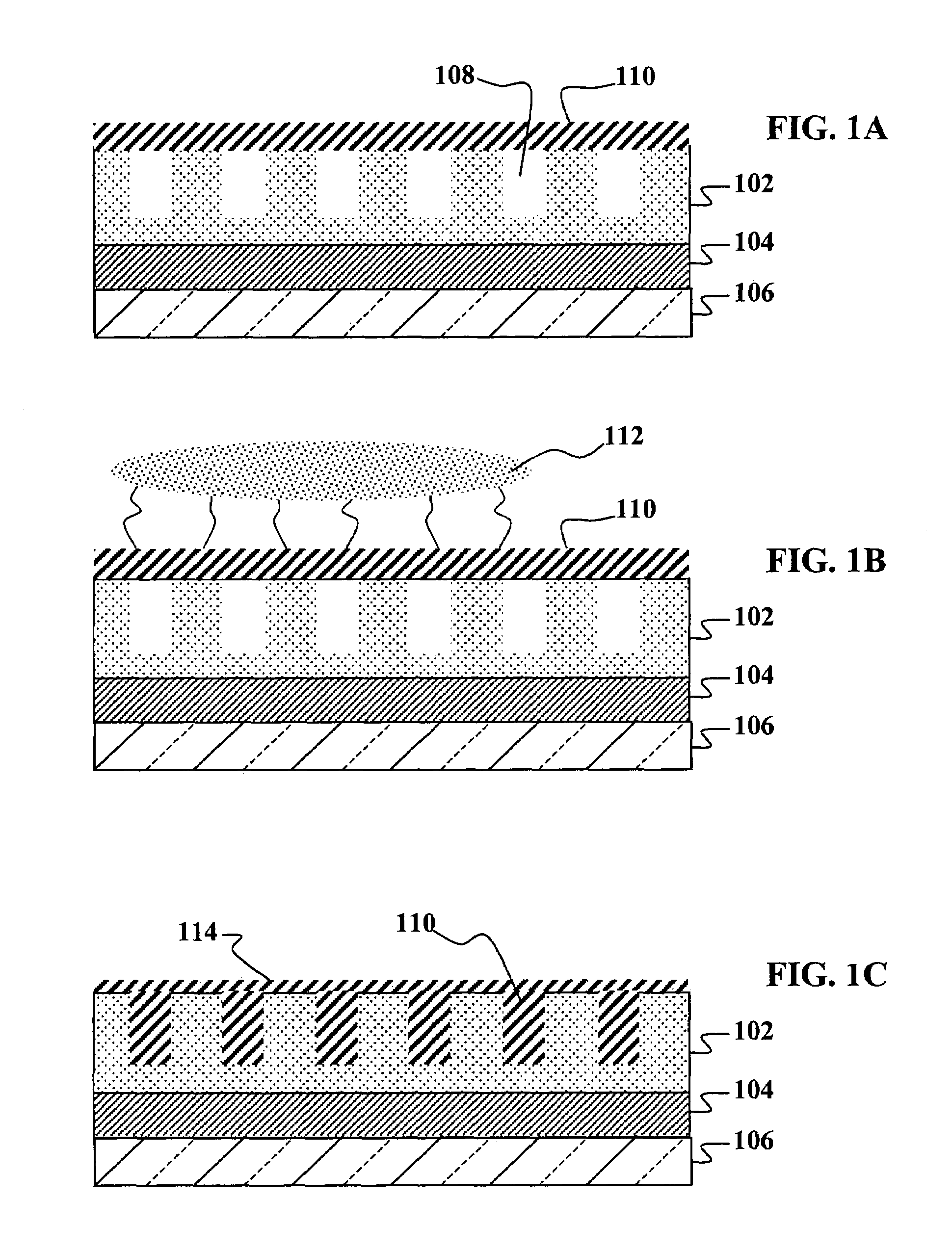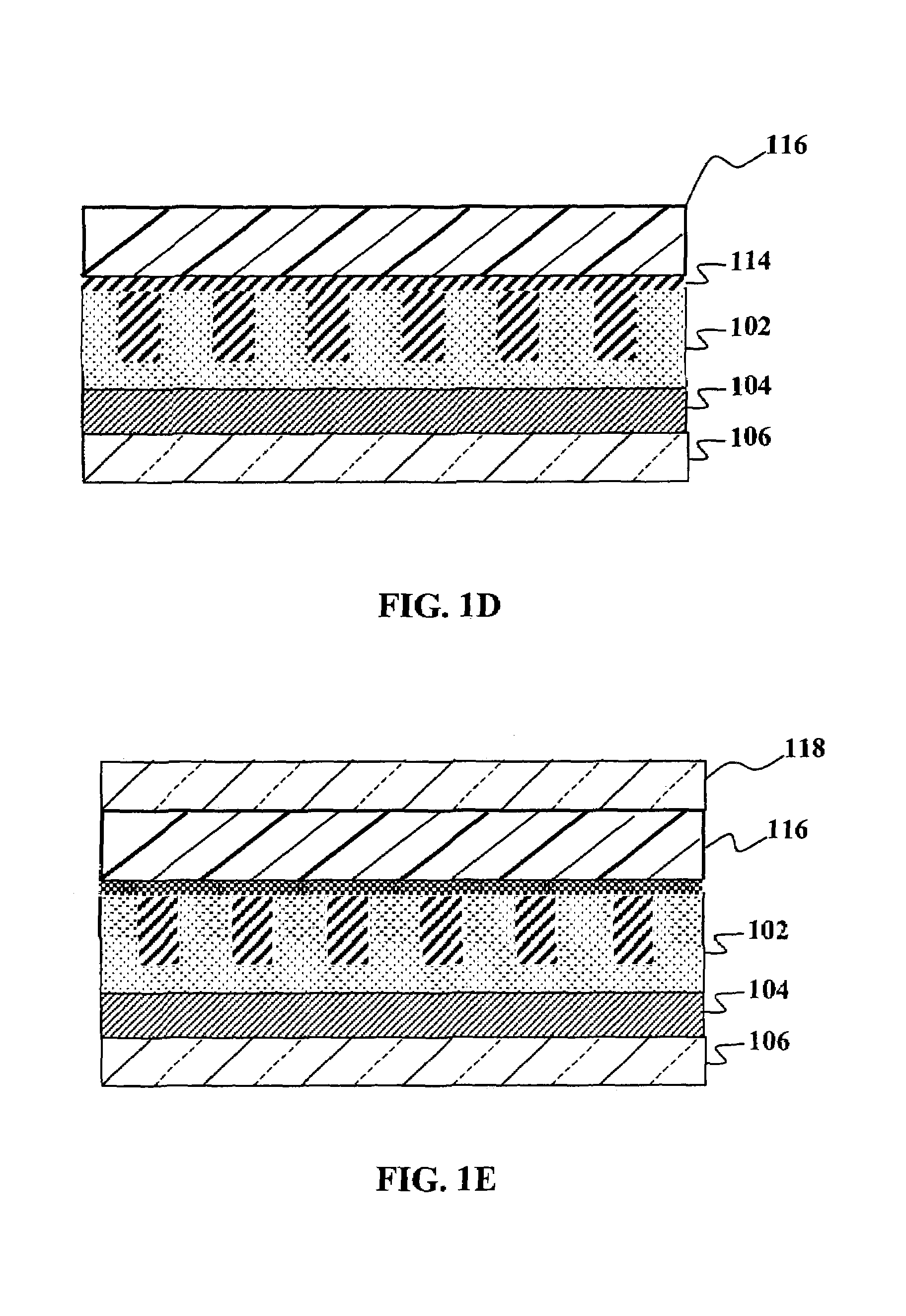Solvent vapor infiltration of organic materials into nanostructures
a nanostructure and organic material technology, applied in nanoinformatics, sustainable manufacturing/processing, final product manufacturing, etc., can solve the problems of degrading organic materials and affecting the resulting devi
- Summary
- Abstract
- Description
- Claims
- Application Information
AI Technical Summary
Problems solved by technology
Method used
Image
Examples
Embodiment Construction
[0009]Although the following detailed description contains many specific details for the purposes of illustration, anyone of ordinary skill in the art will appreciate that many variations and alterations to the following details are within the scope of the invention. Accordingly, the exemplary embodiments of the invention described below are set forth without any loss of generality to, and without imposing limitations upon, the claimed invention.
[0010]According to embodiments of the present invention, empty spaces in a nanostructure can be filled with a polymer or other organic material (such as a small molecule, e.g., fullerene, pigment, or dye) at room temperature by lowering the glass transition temperature Tg by exposing the polymer to solvent vapor while on or mixed with the nanostructured material. The exposure to solvent vapor results in intimate contact between the polymer and the nanostructured material without having to expose them to possibly detrimental heat to melt in t...
PUM
| Property | Measurement | Unit |
|---|---|---|
| Diameter | aaaaa | aaaaa |
| Diameter | aaaaa | aaaaa |
| Nanoscale particle size | aaaaa | aaaaa |
Abstract
Description
Claims
Application Information
 Login to View More
Login to View More - R&D
- Intellectual Property
- Life Sciences
- Materials
- Tech Scout
- Unparalleled Data Quality
- Higher Quality Content
- 60% Fewer Hallucinations
Browse by: Latest US Patents, China's latest patents, Technical Efficacy Thesaurus, Application Domain, Technology Topic, Popular Technical Reports.
© 2025 PatSnap. All rights reserved.Legal|Privacy policy|Modern Slavery Act Transparency Statement|Sitemap|About US| Contact US: help@patsnap.com



